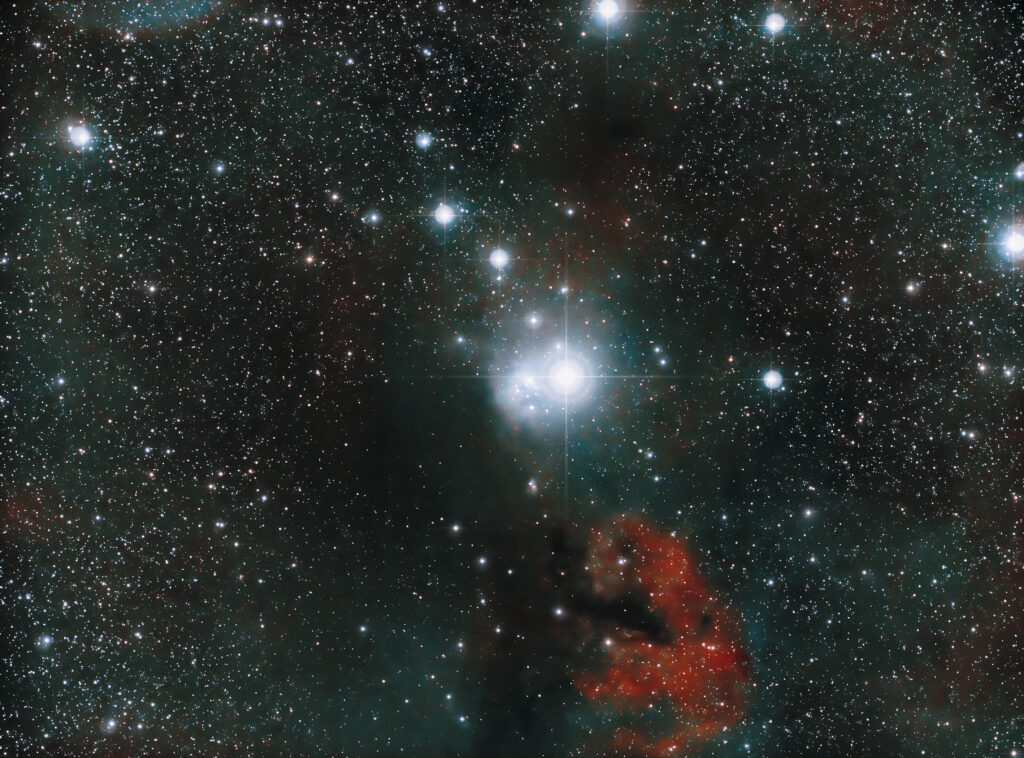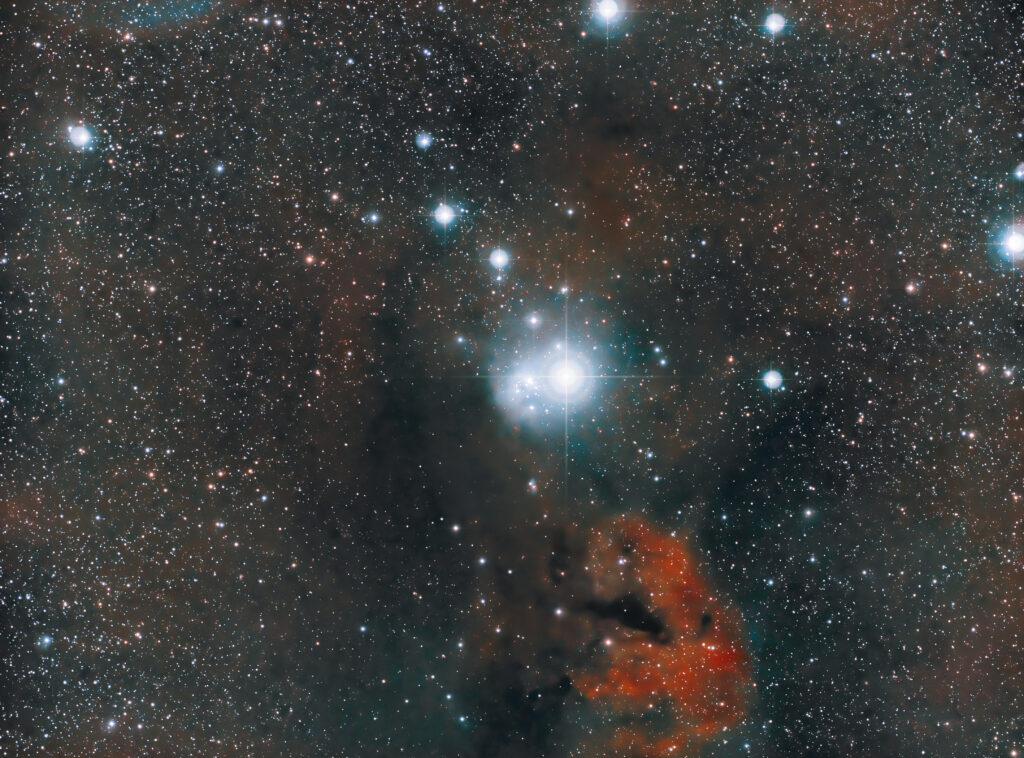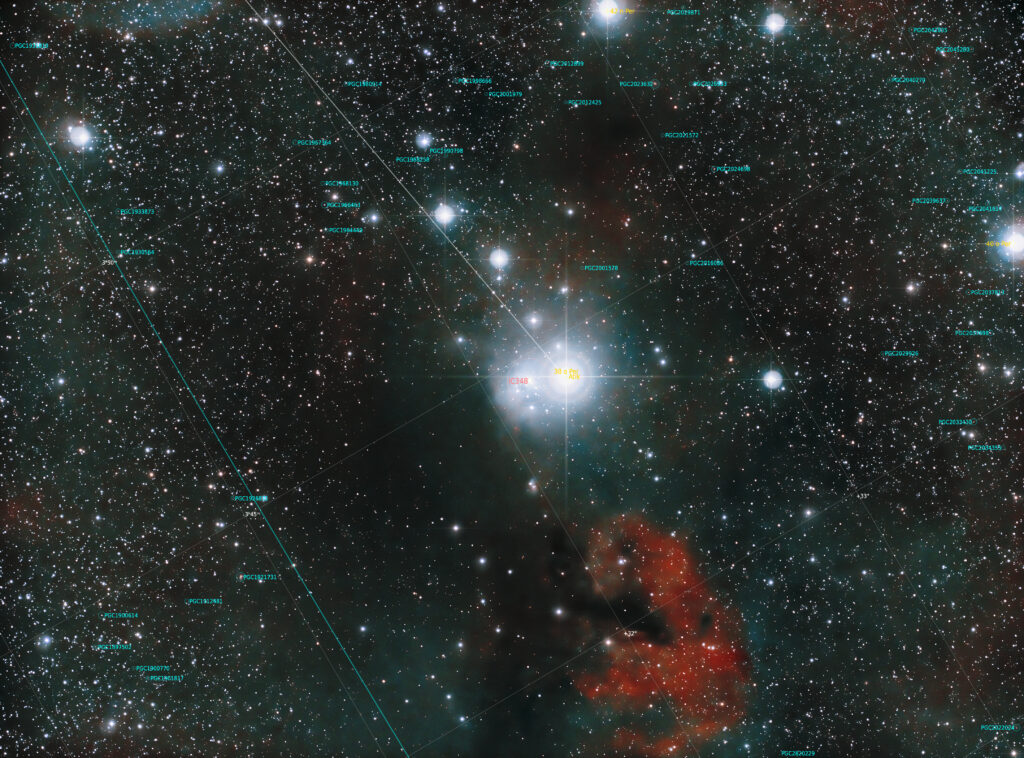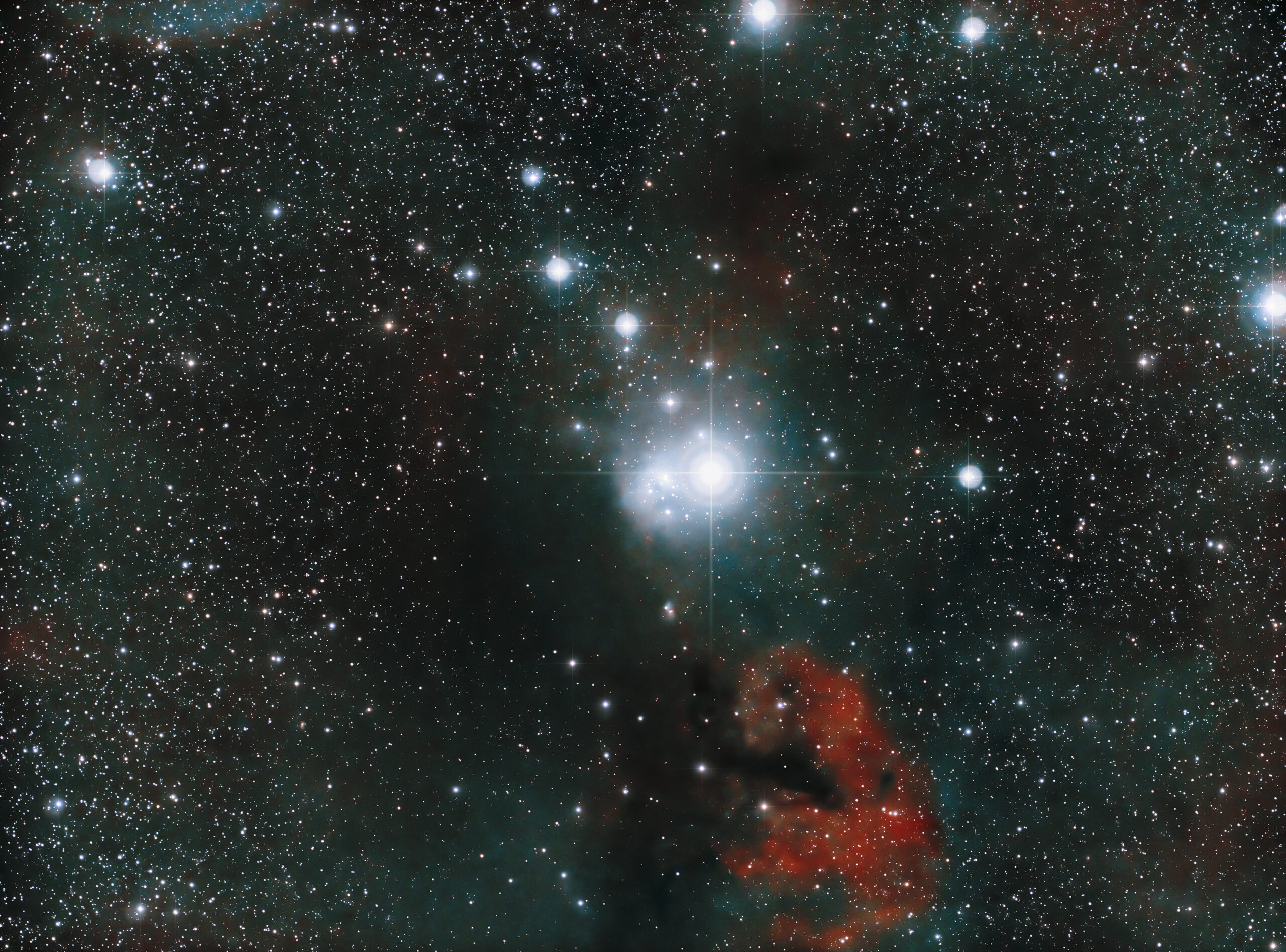

Astrobin: https://www.astrobin.com/jn7jdt/
Astrometry: https://nova.astrometry.net/user_images/7703840#annotated
According to Andre B. [ https://telescope.live/blog/dynamic-narrowband-combinations-pixelmath ] who in turns referred to The Coldest Night [ https://thecoldestnights.com/2020/06/pixinsight-dynamic-narrowband-combinations-with-pixelmath/ ] narrowband channels integration and combination is subjective and could not coincide with a simple channel combination of Sii Ha and Oiii masters within an RGB implementation, as also suggested by Edoardo Luca Radice during CEDIC 2019; cfr. “Creating near true color images for nebulae from narrow band data using PixInsight” [ http://www.arciereceleste.it/tutorial-pixinsight/cat-tutorial-eng/110-cedic19-art?fbclid=IwAR0ybmyfZCC8G2ykfgDavTpBY7tEjE_DhJOAeT_QM5gZpKSvAfSmiNOoznw ]
In my approach and attempt I used PixInSight > Pixelmath formula
R = (Oiii^~Oiii)Sii + ~(Oiii^~Oiii)Ha
G = ((OiiiHa)^~(OiiiHa))Ha + ~((OiiiHa)^~(OiiiHa))Oiii
B = Oiii
to generate IC348 integration and postproduction.


